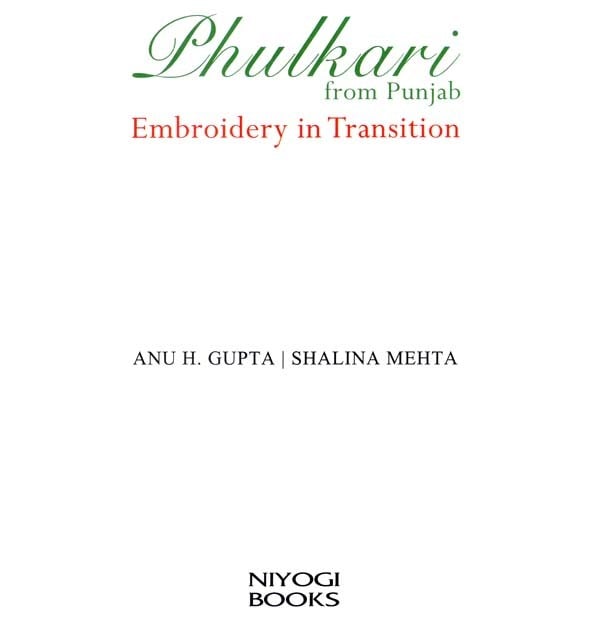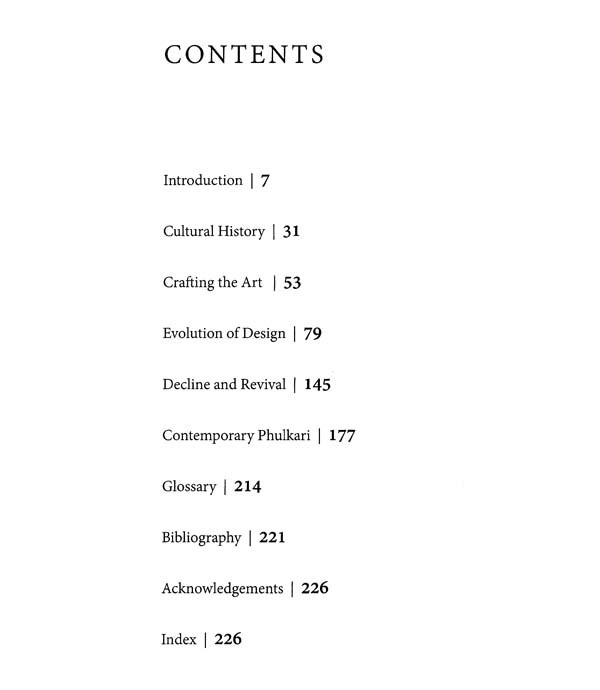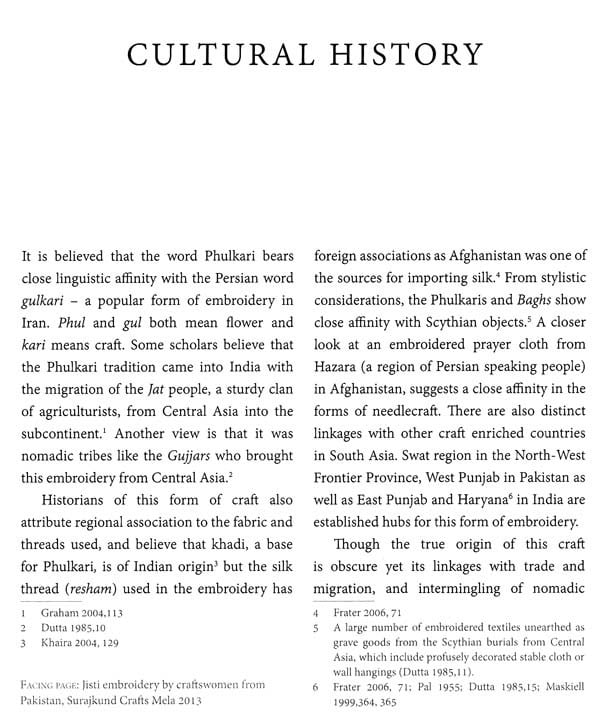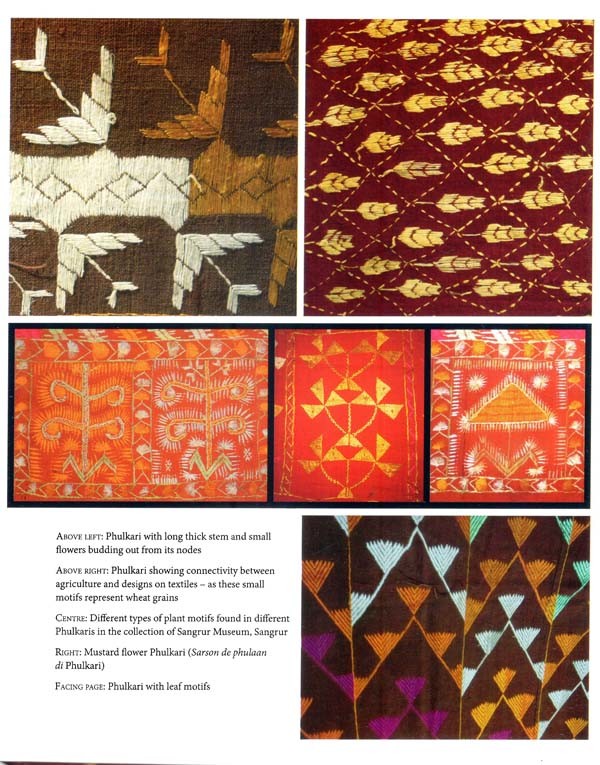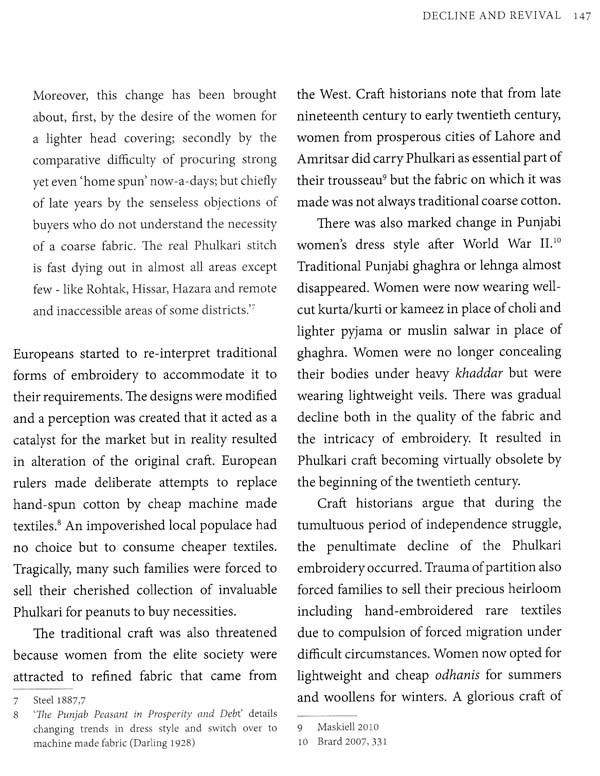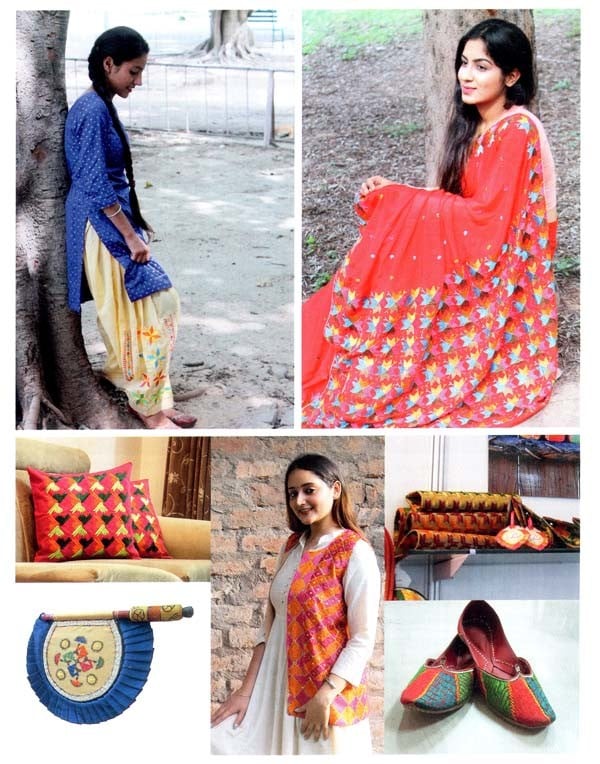
Phulkari from Punjab- Embroidery in Transition
Book Specification
| Item Code: | AZE906 |
| Author: | Anu H. Gupta and Shalina Mehta |
| Publisher: | NIYOGI BOOKS |
| Language: | ENGLISH |
| Edition: | 2019 |
| ISBN: | 9789389136340 |
| Pages: | 232 (Throughout Color Illustrations) |
| Cover: | HARDCOVER |
| Other Details | 9.00x7.00 inch |
| Weight | 640 gm |
Book Description
Meticulously researched, with text and pictures that bring to life the nearly lost craft, the book traces the history of Phulkari through the ages: the craft, the decline, the revival. It highlights the agonies of lost finesse and compulsions of commoditization that the practitioners of the art shared with the authors. And on a positive note, it shares instances of revival and innovation, narrates the robustness with which Phulkari has re-entered the imagination of designers.
The book is not a mere chronicle of Phulkari embroidery but a lived experience that spanned over seven years. Stitch craft and its depiction is only one aspect of the narratives; while the canvas inter alia encapsulates rituals that sustain traditions, markets that process the craft, connoisseurs eager to conserve and institutions responsible for its sustenance.
The book is a source of inspiration for enterprising students of craft, institutions teaching art, craft, culture and history as also a befitting tribute to a distinct cultural tradition. It offers glimpses of India's heritage and diverse treasure trove in the field of textile craft.
Currently she holds the post of Assistant Professor at the University Institute of Fashion Technology and Vocational Development, Panjab University, Chandigarh.
Prof. Shalina Mehta, Ph.D from Delhi University, retired from Panjab University, Chandigarh, having taught social and cultural anthropology for 40 years at the Department of Anthropology. She has published extensively on various subjects of contemporary interest and has more than 70 articles published in national and International journals of repute. She has three books and four edited volumes to her credit. She has been recipient of several National and International Honours and Awards and is nominated to various national and International academic bodies.
The tradition handicrafts integral the cultural fabric of Indian subcontinent. Inhabitants of the region had mastered the skills and art developing textiles more than 4000 years ago. The earliest Indian needles FACING Figurative Phulkari inspired colonial era the collection Government Museum and excavated Mohenjo Daro around 2000 indicate tradition of sewing and hence distinct possibility embroidery.
Sculptural and evidences fineness, richness and styles of Indian and needlework. Patterns on textile Buddhist sculptures of the first and century B.C.-Bharhut and Kushan sculptures in century A.D. and frescos' during the fifth and centuries A.D. suggest sophisticated techniques textile decorations were known from a early period. However, primary evidence not available as none of these early survived. These patterns suggest decorations on various parts garments like upper arm, neck and in the lower wraps embroidery.
**Contents and Sample Pages**
